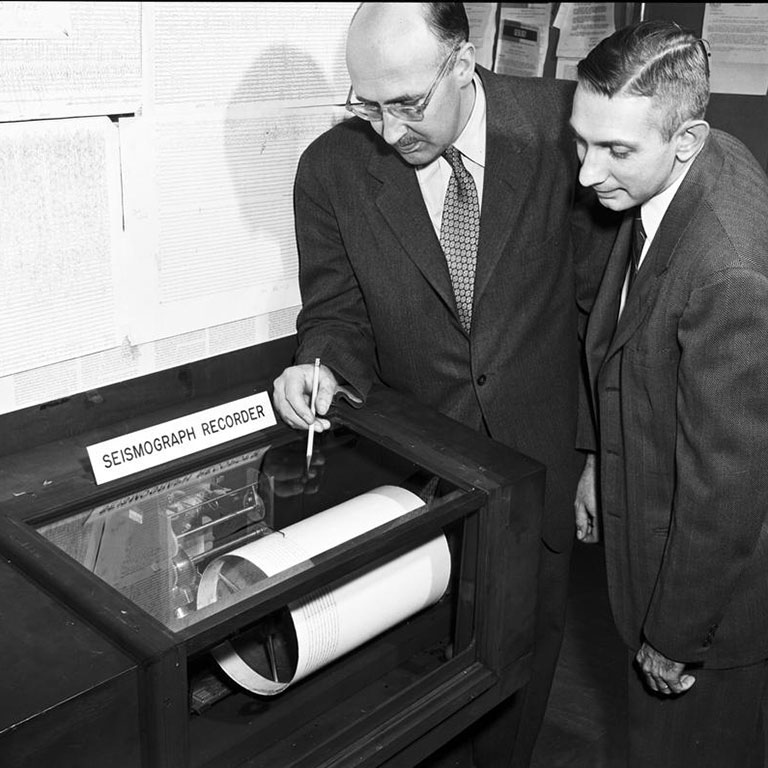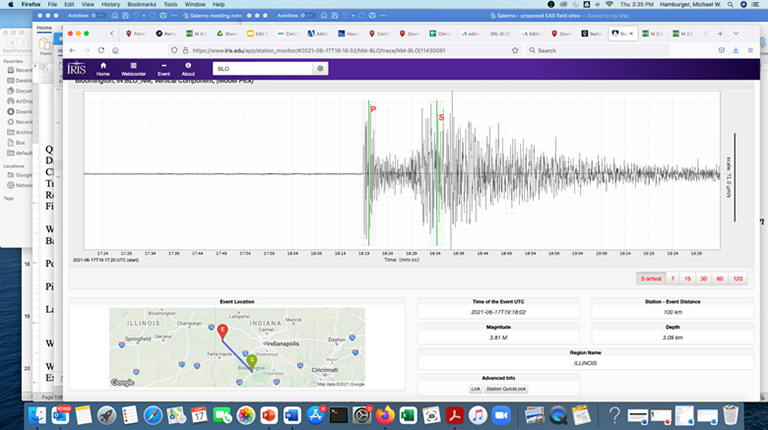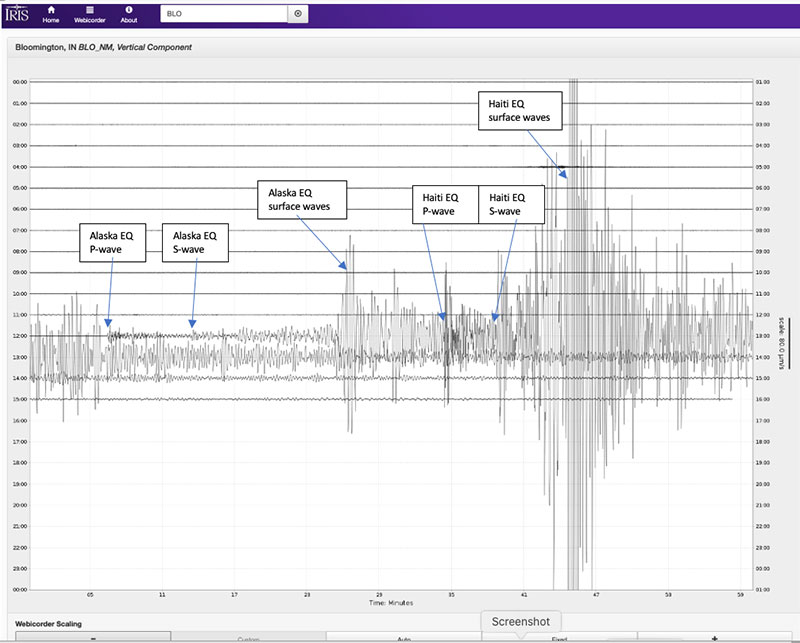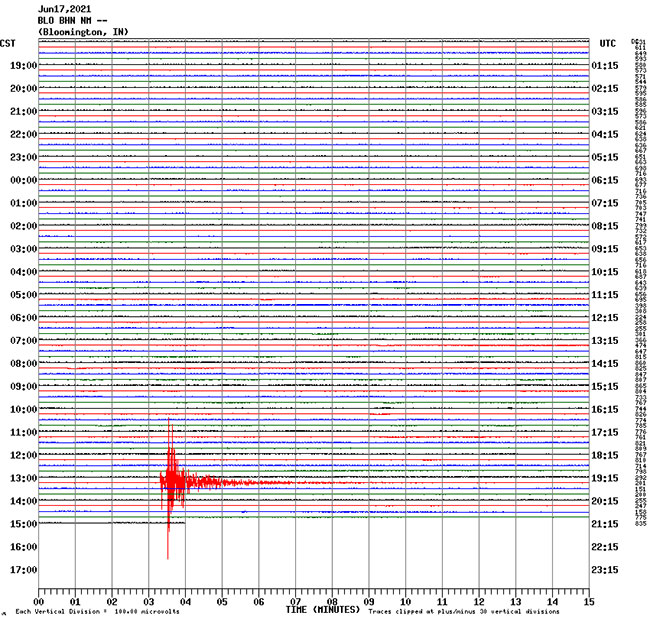
Explore the data
Image: New seismograph for Geology Department, January 6, 1954. (L to R) Professor Judson Mead, and graduate student Robert Blakely.
The Indiana University seismograph station (station code BLO) is one of the longest continuously operated seismic monitoring facilities in the Midwest. It records earthquakes ranging from tiny local earthquakes—even those too small to feel—to large earthquakes virtually any place in the world. Data from the seismograph station are used by researchers from around the world to study everything from deep Earth structure to earthquakes in the New Madrid seismic zone to nuclear explosions.
View information about the August 14th Haiti earthquake.


Location: 18.352N, 73.480W (12.1 km (~7.5 mi) NE of Saint-Louis du Sud, Haiti)
Magnitude: 7.2
Depth: 10 km (6 miles) beneath earth’s surface
Universal Time (UTC): 14 Aug 2021 12:29:09
Time near the Epicenter: 14 Aug 2021 08:29:09 AM
Note that the earthquake occurred just 31 minutes after another major event, a M6.9 earthquake offshore Alaska, so the two seismograms are merged on this record.

Magnitude 3.8 - 3 km W of Bloomingdale, Indiana
Date: 2021-06-17
Time: 19:18:02 (UTC) – 3:18:02 PM (EDT)
Location: 39.832°N 87.288°W
Depth: 7.7 km (4.8 miles) beneath Earth’s surface
Interviews with EAS Professor Michael Hamburger:
The station was established in collaboration with St. Louis University’s seismology laboratory—a regional center led by Prof. Otto Nuttli, one of the pioneers of midcontinent seismology research. The IU seismograph was one of about five state-of-the-art seismograph stations set up to the standards of the Worldwide Seismograph Station Network (WWSSN) and provided important constraints on midcontinent seismic activity for several decades. Originally operated near the IU golf course, it was relocated in the early 1960s into a special seismic vault that was built into the newly constructed Geology Building. Until the late 1980s, it operated using a photographic recording system. At that time, it was converted to a less cumbersome pen/ink recording system, more suitable to education and outreach uses.
In about 1995, the analog system was updated with a broadband digital recording system by the St. Louis University team. The IU seismograph station has been operating continuously since the early 1960s. The IU collection contains analog seismograms for ~55 years, consisting of approximately 120,000 individual paper seismograms.
For the last 20 years, data are collected digitally, and archived by the IRIS (Incorporated Research Institutions for Seismology) consortium.

Image: New seismograph for Geology Department, January 6, 1954. (L to R) Professor Judson Mead, and graduate student Robert Blakely.